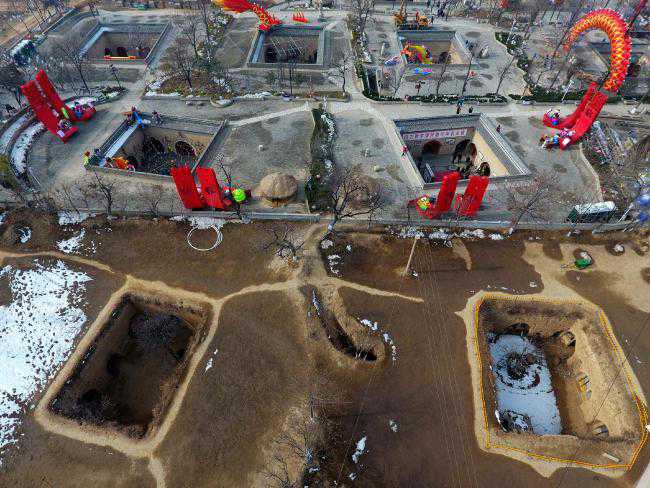China’s hidden, subterranean cities
29 January, 2018

The subterranean dwellings could take up to three years to dig. Picture: VCG/VCG via Getty ImagesSource:Getty Images
FOR hundreds of years few people knew what lurked beneath the surface here. But we’re finding out.
AT FIRST glance at this aerial shot, it’s hard to know what you’re even looking at.
And this pattern of orderly shaped etched into the surface of the earth barely hints at what’s lurking below.
What this photograph reveals is a village in China that existed for hundreds of years and home to about six generations of people — deep beneath the surface of the earth.
This complicated, but well organised, subterranean network of 100 villages, comprising 10,000 homes and terraces — called yaodongs — can be found in Sanmenxia in China’s Henan province.
It’s believed some two million people called this subterranean network home. And some still do.
The whole idea of living underground dates back even longer in China than many of these dwellings have been around.
While much of the world’s civilisation was looking to build infrastructure up, people living in some regions in central China some 4000 years ago developed the idea of digging into land pits and building below the ground.
This allowed people to keep their homes cool in summer and warm in winter — the region has hot summers and cold winters. And the dwellings were said to be earthquake-resistant and soundproof, and incorporated large wells to manage floods.
In a typical subterranean courtyard in the Sanmenxia region, there was a separate bathroom, sitting room and bedrooms. The dwelling would also include a livestock shed and store room.
Kitchens would use a clever series of stoves, that took advantage of the flow of heat. There was also a sophisticated drainage system.
It would take as many as three years of digging to create an underground house about 7m high. It’s been reported that some 3000 people still live in the subterranean city in Sanmenxia. Major events, such as festivals and weddings, are held there. Most of the homes have been decked out with modern features, including electricity.
The Daily Mail reports a basic one-bedroom cave without plumbing is available to rent for about $37 per month and a full, three-bedroom house, which includes a bathroom, was priced at around $56,000.
But the unusual, historic city has become a tourist attraction since 2015, when some 100 of the homes were restored and developed into tourist attractions.
They’ve been recognised as sites of significant historic, scientific and artistic value, and there have been efforts by the provincial government to preserve them.
And the concept of subterranean cities has continued to have a big role in life in China.
Another mysterious underground city, called Dixia Cheng, sprawls underneath Beijing, and is believed to stretch out for more than 82sq km.
Dixia Cheng is relatively modern — built in the 1970s — and was designed to offer shelter during invasions, bombings and nuclear attacks, in anticipation of conflict with the then-Soviet Union. The city’s tunnels were largely dug by hand.
Dixia Cheng was open to the public for a short time, and allowed members of the public to view the bunk beds and decaying items that remained inside, and even buy souvenirs from still-operating stores.
But Dixia Cheng closed for renovations in 2008, and hasn’t been opened since.
TAG(s):
